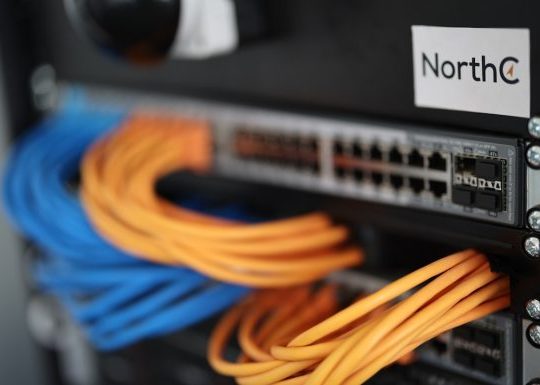In the world of software development and data management, using realistic data for testing is crucial. However, employing real user data in non-production environments, such as staging or development environments, introduces numerous security and privacy risks. This is where random test addresses become essential, offering a safer alternative for simulating real-world scenarios without the vulnerabilities associated with actual data exposure.
Why Use Random Test Addresses?
All Heading
Random test addresses are artificially generated address data used primarily for quality assurance, staging, and development environments. They mimic the format and structure of real addresses, allowing developers and QA teams to test functions like geolocation services, shipping calculations, and customer databases—without endangering personal information.
These addresses are an instrumental part of a safe data strategy. Regulatory compliance frameworks like GDPR (General Data Protection Regulation), HIPAA (Health Insurance Portability and Accountability Act), and others prohibit using identifiable real-user information in non-production environments unless properly anonymized. Failure to comply can lead to both legal repercussions and reputational damage.
Benefits of Using Synthetic Addresses
- Privacy Protection: Eliminates the risk of exposing real customer data in unsecured environments.
- Realistic Simulation: Allows for thorough application testing with data closely resembling live content.
- Improves Test Quality: Enhances the ability to identify bugs and edge cases that wouldn’t surface with limited or unrealistic data.
- Reduces Legal Risks: Prevents violations of data compliance standards.

How to Generate Safe Test Addresses
Creating random test addresses requires thoughtful strategy. While developers might be tempted to manually input “123 Fake Street,” such approaches are limited in scope and realism. Instead, organizations are leveraging tools and practices such as:
- Test Data Generation Tools: Applications like Faker, Mockaroo, or proprietary in-house scripts produce comprehensive address formats, including street names, cities, postal codes, and even international formats.
- Geo Distribution: Assigning test addresses across diverse geographies helps uncover regional or locale-specific bugs, like postal code validation or character encoding for non-Latin scripts.
- Controlled Variability: Including a mix of standard, edge-case, and invalid addresses for robust software testing.
Automation allows developers to generate thousands of unique, plausible addresses across multiple countries and regions with little manual overhead.
Best Practices For Using Random Addresses in Staging
While synthetic addresses are a step in the right direction, how they are used is just as important. Organizations incorporating these test practices should adhere to the following best practices:
- Data Segmentation: Maintain a clear division between test and production datasets. Regularly audit system configurations and access levels to ensure test data does not bleed into production environments.
- Version Control: Ensure the test addresses are part of the configuration files or seed scripts managed in version control systems like Git to maintain test consistency.
- Test for Realism: While the addresses are fake, they must still adhere to postal format rules, locale-specific address conventions, and zip code patterns to be meaningful for testing.
- Clean Environment Maintenance: Schedule regular purging of old test data and ensure everything in the staging database is appropriately labeled or tagged as fake.

Common Mistakes to Avoid
Incorporating random address data seems straightforward, but organizations often fall into these common traps:
- Using Real Data Without Permission: It’s not uncommon for development teams to snapshot production data and load it into staging for convenience. This practice is risky and discouraged under most legal standards.
- Inconsistency Across Environments: Without a standardized generation method, every environment might contain different datasets, leading to inconsistent test results.
- Neglecting Edge Cases: Limiting your randomized data to common formats can make the entire exercise ineffective. Include international addresses, PO boxes, and even purposely malformed entries for validation.
Integrating With Other Test Data Sets
A robust testing environment doesn’t just contain address data. It includes usernames, email addresses, phone numbers, payment details (fake or obfuscated), and more. Integrating random test addresses along with this holistic dataset provides a more lifelike scenario.
Coupling addresses with user personas and behavioral patterns allows for testing advanced features like recommendation systems, shipping rules, and fraud detection algorithms under simulated real-world conditions.
Compliance and Ethical Considerations
Though synthetic data is exempt from many data protection laws, ethical considerations still apply. Developers must ensure that no inadvertently real-looking data slips in—the randomness should be guaranteed by the data generation tool being used.
Moreover, organizations should document their synthetic data strategy, especially in regulated industries. Auditors and compliance officers will appreciate a well-laid out blueprint showing commitment to secure development practices.
Conclusion
Random test addresses, when used correctly, enhance the reliability and security of software testing environments. They are not merely a technical convenience—they are an essential practice in today’s privacy-conscious and compliance-heavy landscape. Organizations that adopt safe staging data practices build more trustworthy systems and demonstrate a commitment to protecting their users at every phase of development.
Frequently Asked Questions (FAQ)
-
Q: Are fake test addresses legal to use?
A: Yes, as long as they do not inadvertently match real individuals or businesses. Using synthetic, non-identifiable data is not just legal—it’s encouraged in staging and non-production environments. -
Q: Can random test addresses be used for performance testing?
A: Absolutely. High volumes of synthetic addresses help evaluate how systems handle heavy loads, pagination, and search optimizations in a safe manner. -
Q: Is there a standard for formatting test addresses?
A: While no universal standard exists, best practices involve mimicking real-world postal rules for each country, ensuring compatibility across all services and APIs in use. -
Q: Can I use real customer data if I anonymize it?
A: Possibly. However, anonymization must be thorough and irreversible. Most organizations prefer synthetic data to avoid any risk of re-identification. -
Q: How often should fake data sets be refreshed?
A: Ideally, with every major release or database reset. Keeping test data up to date ensures consistent testing across evolving application features.













Recent Comments